In my last post, I described the story of Mohini, a white tiger who created a small, well-worn patch amidst abundant landscape of opportunity. As we confront fear and confusion, we often seek to live small, to blend in to support our hope that we can forestall change. By recognizing this change is normal, we open our horizons to risk and possibility. We confront our mortality.
Stephen Batchelor offers a meditation on this choice for living. He offers three simple lines to practice with and explore: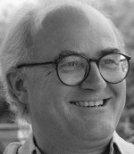
Death alone is certain.
The time of death is uncertain.
What should I do?
Try it out right now:
Confronting our mortality isn’t about how to die but how to live. What really matters in our life? It has been said that when one confronts death, the two questions one asks are “Am I loved?” and “Did I love well?” There is a lot to learn from these questions. Thankfully, as we confront the impermanence of our experience, there are recipes for living with heart and confronting this question of mortality before we are dying. One such recipe comes from meditation teacher Frank Ostaseski in his new book, The Five Invitations, Discovering What Death Can Teach Us About Living Fully. Ostaseski collected the lessons he learned from years working as a hospice worker, sitting with the dying. The Five Invitations are described below:
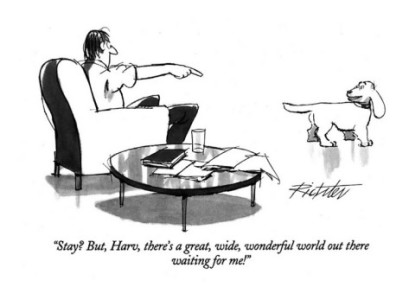 Don’t Wait – This can take many forms including both words and actions. It could be telling someone you love them or taking that big chance on an adventure or with a career. Our mortality and impermanence has a way of sneaking up on us that betrays our planning and future dreams. Recognize that everything is changing and we are changing with it. It may be that you need to start before you are ready. To love. To let go. To forgive. Living vulnerably. As we accept this invitation, we can live from a place of hope instead of fear, knowing that they are two sides of the same coin. The coin of uncertainty, impermanence and mortality.
Don’t Wait – This can take many forms including both words and actions. It could be telling someone you love them or taking that big chance on an adventure or with a career. Our mortality and impermanence has a way of sneaking up on us that betrays our planning and future dreams. Recognize that everything is changing and we are changing with it. It may be that you need to start before you are ready. To love. To let go. To forgive. Living vulnerably. As we accept this invitation, we can live from a place of hope instead of fear, knowing that they are two sides of the same coin. The coin of uncertainty, impermanence and mortality.
Welcome Everything, Push Away Nothing – There can be beauty and meaning in everything. With this phrase, we are invited to replace our judgment with a curiosity. By being open and receptive, we expand our possibilities. When one friend of mine complains to his wife about how he is aging, she reminds him, “Don’t die before you’re dead.” In this way, he can reset himself to see change as not worse or better but just different. Deferring judgment, we practice a generosity of assumption towards ourselves and others while recognizing we don’t need to try to fix or change everything. This does not mean that we bow to injustice. Instead, we see things as they are and bring discernment to our next action. This important “letting in” step is critical to letting go.
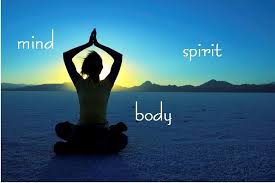
Bring Your Whole Self to the Experience – Bringing your whole self requires a fierce vulnerability. It means contacting the dark parts of your soul, your shame, your grief. We come to define ourselves by our external roles as workers, partners, and community members when that is but a piece of who we are. We forget what we are passionate about and assume the perceived dreams of these roles as a shortcut to happiness. Then, when we find ourselves at the top (or bottom) of the career ladder or at the start (or end) of a relationship, we have difficulty connecting with the emotions that accompany these transitions. Only by connecting our heart and our mind, can we access the compassion of this invitation.
Find a Place of Rest in the Middle of Things – Ostaseski writes, “we imagine that we can only find rest by changing our circumstances.” For example, finding a quiet room or hiding away in the mountains. If instead, we can find a refuge within, we can better handle the swirl of excitement and chaos that surrounds us. We can learn to ride the waves of our experience because we just can’t stop them. Mindfulness practice is a good start. Bringing our awareness to our breath (the only thing we can control), our body, and our senses is a start. It may include surrounding yourself with visual reminders of these invitations or reaching out to dear friends. Most importantly, finding this place of rest in the middle of things creates an integration between your life and the world around you because this place is part of your world. This may mean offering some vulnerability as others see you seeking rest when they are panicked and scared
Cultivate Don’t Know Mind – This one is a little different. Don’t know mind is a reflection of receptivity. Replacing judgment with curiosity and wonder. This approach is very forgiving because we aren’t set in our ways, beliefs and opinions. We perceive an error in our judgment and we move on by adjusting it based on new information. With this mindset, we aren’t spending as much time building a narrative of our suffering and injustice and reinforcing it through confirmation bias. We become less reactive and more welcoming with others. There is an intimacy and a surrender in allowing oneself to just not know.”
Sign up today for fall offerings from Your Mindful Coach
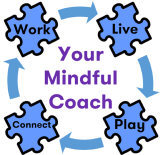
Mindful Men Meeting First Thursday each month beginning September 7, 7:30-8:45pm. Practice and discussion to support a regular mindfulness practice.
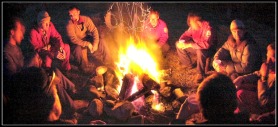 Men Sitting By A Fire Third Thursday each month beginning September 21, 7:30-9:00pm. Inquiry-based discussion group focused on male identity, roles and responsibility.
Men Sitting By A Fire Third Thursday each month beginning September 21, 7:30-9:00pm. Inquiry-based discussion group focused on male identity, roles and responsibility.
Ostaseski closes his book with a poem from Sono, one of the people he supported in his hospice work. Sono lived on the edge of poverty, barely surviving. As her life ended, she asked Ostaseski to learn this poem by heart so that it would live with him. Here is her poem:
Sono’s Death Poem
Don’t just stand there with your hair turning gray,
soon enough the seas will sink your little island.
So while there is still the illusion of time,
set out for another shore.
No sense packing a bag.
You won’t be able to lift it into your boat.
Give away all your collections.
Take only new seeds and an old stick.
Send out some prayers on the wind before you sail.
Don’t be afraid.
Someone knows you’re coming
An extra fish has been salted.
— Mona (Sono) Santacroce (1928-1995)
Thanks for this wonderful post, Marc! It’s ironic that the closer we get to death, the more we think about living life fully. In our society, where death is not talked about so openly, we forget that the moment we are born, we also begin to die. And to live life, we must learn to let go. I guess we are all afraid of death because it is the ultimate “letting go” experience and it’s hard to give up what we truly desire. It requires becoming vulnerable, like you said – to the ultimate reality of life.
LikeLike